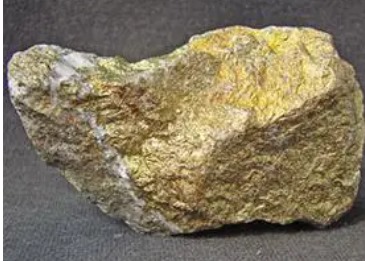Copper ores are mainly divided into two categories: sulfide ores and oxide ores. Sulfide ores are usually processed by pyrometallurgy, while oxide ores are usually processed by hydrometallurgy. Gold ore can coexist with copper ore because some gold deposits are associated with copper mineralization.
Copper sulfide
The pyrometallurgical processing of copper sulfide ore involves four main steps: roasting, smelting, transformation, and electrolytic refining. The roasting process involves heating the ore in the presence of air or oxygen to convert sulfides into oxides. Then the obtained calcined material is melted in a furnace to produce a mixture of matte, copper, iron, and sulfur. Then transfer the ice copper to the converter for oxidation, generating crude copper. Finally, crude copper is refined by electrolysis to produce pure copper.
Copper oxide
The wet metallurgical processing of oxidized copper ore includes three main steps: leaching, solvent extraction, and electrolytic deposition. The leaching process involves dissolving oxidized copper ore in an acidic solution (usually sulfuric acid). Then, the obtained copper sulfate solution is subjected to solvent extraction to separate copper from impurities. Then copper is extracted from organic solvents using an aqueous solution and recovered through electrolytic deposition, which is a process of depositing copper metal from copper sulfate solution onto the cathode using electricity.
Copper gold mine
A combination of pyrometallurgical and hydrometallurgical techniques can be used to process ores containing both gold and copper to extract these two metals. The pyrometallurgical processing of ores involves the roasting and smelting of sulfide ores to produce a mixture of brass, copper, iron, and sulfur. During the smelting process, some of the gold contained in the ore will be captured by copper and present in the obtained ice copper. Then, the ice copper undergoes an oxidation step in the converter to produce crude copper, followed by electrolytic refining to produce pure copper. In the refining step, the gold present in copper is recovered as a byproduct. Unlike pyrometallurgical treatment, hydrometallurgical treatment involves leaching oxide ores with dilute sulfuric acid solution to dissolve copper. Then, the obtained copper sulfate solution is subjected to solvent extraction to separate copper from impurities (including possible gold). Then, copper is extracted from organic solvents using an aqueous solution and recovered through electrolytic deposition to produce pure copper. Gold that cannot be extracted from copper sulfate solution can be recovered from the residue through cyanide leaching process.

 English
English  Español
Español  Português
Português  русский
русский  français
français  日本語
日本語  Deutsch
Deutsch  Tiếng Việt
Tiếng Việt  Italiano
Italiano  Nederlands
Nederlands  ไทย
ไทย  Polski
Polski  한국어
한국어  Svenska
Svenska  Malay
Malay  বাংলা
বাংলা  हिन्दी
हिन्दी  Pilipino
Pilipino  Türk
Türk  عربى
عربى  Indonesia
Indonesia  norsk
norsk  čeština
čeština  Українська
Українська  Javanese
Javanese  فارسی
فارسی  తెలుగు
తెలుగు  Burmese
Burmese  български
български  Latine
Latine  Azərbaycan
Azərbaycan  Српски
Српски  Esperanto
Esperanto  Afrikaans
Afrikaans  Català
Català  Cymraeg
Cymraeg  Беларус
Беларус  Hrvatski
Hrvatski  Kreyòl ayisyen
Kreyòl ayisyen  Shqiptar
Shqiptar  Bosanski
Bosanski  Кыргыз тили
Кыргыз тили  ಕನ್ನಡ
ಕನ್ನಡ  IsiXhosa
IsiXhosa  Chichewa
Chichewa  Somali
Somali  O'zbek
O'zbek  հայերեն
հայերեն  Sundanese
Sundanese  Malagasy
Malagasy 






